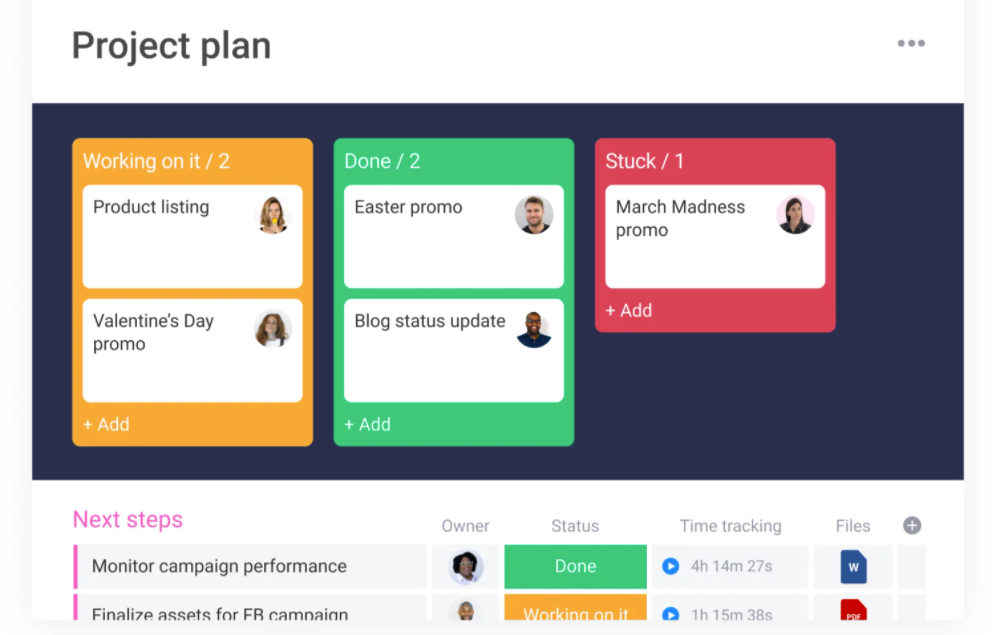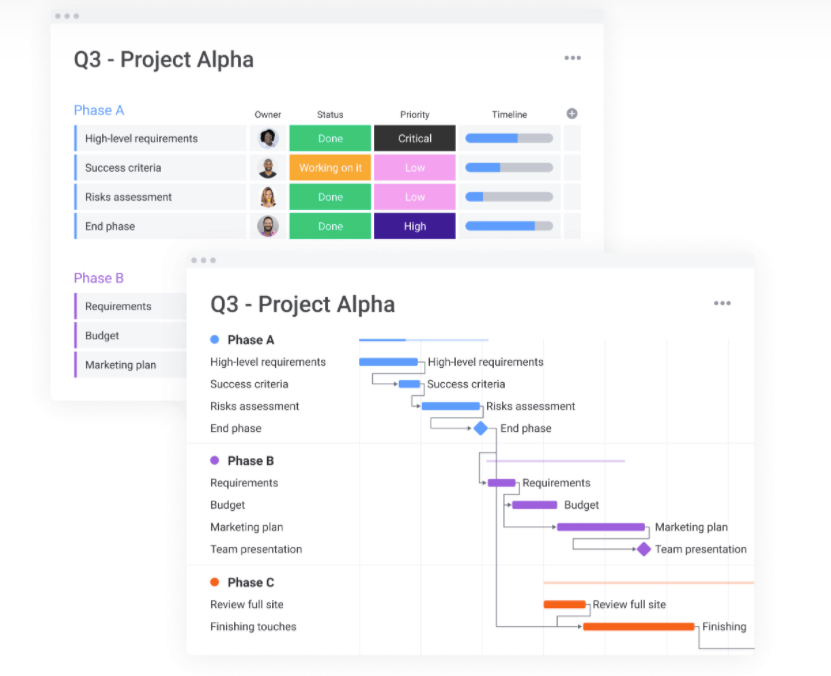Project management is a vast field. It spans multiple industries and requires a variety of skills. One commonality within the field of project management is the techniques project managers use to complete the job.
No matter the industry or project, project management techniques can help teams plan, manage, and ensure a project’s success. Though there are many project management techniques out there, we rounded up our top eight favorites that every project manager should know.
Let’s get started!
Don’t miss more quality content!
1. Work breakdown structure (WBS)
What it is: instead of dealing with a behemoth of a project that feels overwhelming, smart project managers break the work into more manageable tasks, a strategy called work breakdown structure.
How it works: this isn’t just about taking something complicated and breaking it down into smaller parts. Using the WBS technique, it’s easier to organize smaller tasks into a workflow than larger ones.
Why it works: when breaking down a project into smaller bites, teams can see which tasks depend on others and when to complete them. It’s also significantly easier to estimate how much time and money to spend on each task.
This makes resource planning and managing stakeholder’s expectations smoother.
To get started, check out staging-mondaycomblog.kinsta.cloud’s robust Work Breakdown Structure template.

You can list all your tasks and estimate duration, budget, and effort, plus, easily assign resources and identify dependencies on staging-mondaycomblog.kinsta.cloud.
With the Work OS’s drag-and-drop functionality, it’s easy to play around until you’ve got it perfect.
2. Critical Path Method (CPM)
What it is: a technique used in estimating and monitoring a project’s overall duration. When a project is broken down into tasks, each has an estimated duration.
How it works: those tasks are organized by delivery based on logic and any dependencies. When adding up the duration of the longest sequence of tasks, you’ll get an estimate of the overall project duration.
If any tasks are delayed, the project duration increases.
Why it works: monitoring and controlling tasks on the critical path help teams deliver projects on time.
For more information, check out our no-nonsense guide to critical paths.
3. Scrum
What it is: Scrum is the most common framework within the Agile methodology. It defines the project goal over a series of short development cycles known as “sprints.”
How it works: teams refine the high-level scope through iterations. At the start of the sprint, teams figure out how many items they can commit to and create a sprint backlog (a list of the tasks to perform during the sprint).
Why it works: these iterations improve the likelihood of delivering a product that fully satisfies customer requirements. Plus they can deliver a viable product earlier than in more traditional methodologies, which is important for businesses where speed-to-market is crucial.
staging-mondaycomblog.kinsta.cloud’s Work OS offers a range of in-platform collaboration tools that support this. Users can share, view, and update in real-time project documentation, so everyone stays on the same page.

With staging-mondaycomblog.kinsta.cloud’s integrations — such as with Jira or Gitlab for bug tracking and issue management — if you change something on one platform, it’ll change on the others. This way, you’ll always have the most up-to-date information.
4. SAFe
What it is: the Scaled Agile Framework (SAFe) implements Agile project management at scale.
There are 4 levels for organizations of different sizes and requirements — Essential, Large Solution, Portfolio, and Full.
How it works: As an organization grows, SAFe’s agile practices provide a framework that enables teams to develop better products by responding quickly to changing market conditions, customer’s needs, and newly developed technologies.
Why it works: a 2020 study found that SAFe improved collaboration with teams and increased efficiency. Overall, leveraging the power of SAFe allows companies to make faster decisions, communicate more effectively, optimize operations, and stay focused on the customer.

5. Kanban
What it is: in Kanban, a project’s workflow is broken down into smaller tasks. These tasks are then organized and displayed, so everyone on the team is aware of project progress.
How it works: often, tasks on a Kanban software are separated into columns. A classic Kanban board shows 3 columns assigning tasks a status of:
- To-do
- Doing
- Done
One popular addition is a ‘Stuck’ column, to show tasks that are in-progress but not progressing for some reason.
Why it works: Kanban is great for projects with sequential workflows and limited dependencies that allow team members to concentrate on their own tasks.

staging-mondaycomblog.kinsta.cloud’s colorful, intuitive interface makes setting up a Kanban board simple.
Plus, the additional transparency improves focus and motivation as each person can focus on their own work. On Kanban, team members can see how everyone contributes to the overall goal.
6. Gantt
What is it: a Gantt chart is a bar chart allows you to visualize project activities over time. It’s especially useful because it shows what work needs to be completed on specific days.

How it works: Gantt charts allow project managers to determine — at a glance — current project progress and take any action to bring the project back on schedule.
Why it works: Gantt charts show:
- The start date of the project
- The project tasks
- Which team member is working on what task
- When tasks start and finish
- How long tasks take
- Task dependencies and milestones
Don’t miss more quality content!
7. PERT
What is is: PERT isn’t just focused on the critical path’s duration, but also the relationships between project tasks.
PERT shows project tasks arranged more like a flowchart than sequential events.

How it works: this method improves the accuracy of task duration estimates by using 3 possible inputs for the calculation:
- Optimistic time
- Pessimistic time
- Most-likely time
Why it works: This can get pretty detailed so for more information, check out our guide to PERT.
8. Waterfall
What it is: Waterfall is a structured and linear approach to organizing and controlling projects.
How it works: teams divide a project into distinct phases, with each new phase beginning only when competing the previous one.
Why it works: the distinct phases make project planning simple. It’s also easy to monitor if the project is on track.
That makes it good for projects that need to commit to a fixed timeline or budget, such as large infrastructure projects.
Not sure whether a Waterfall or Agile methodology might suit you and your team? We’ve got the perfect article to help you choose.

Improve your projects this year with these techniques
We’ve explored our top eight project management techniques that will ensure your project’s success from A-Z. Whichever one you decide to go for, staging-mondaycomblog.kinsta.cloud has your back.
Our Work OS has all the building blocks to manage your project the way you want it. Let staging-mondaycomblog.kinsta.cloud flex and grow right alongside you. Get started now and find your new favorite project management techniques with our project proposal template.
Don’t miss more quality content!
Don’t miss more quality content!